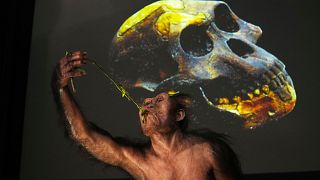Czech Republic
Prague’s newest visitor is 3.2 million years old. Lucy, the famed Australopithecus afarensis fossil, has arrived in the Czech capital alongside Selam, a young child of the same species, for a groundbreaking exhibition on human evolution.
Discovered in Ethiopia in 1974, Lucy revolutionized our understanding of human origins.
Her skeletal remains provided the first clear evidence of bipedalism—walking upright—a key milestone in evolution.
Named after the Beatles’ song Lucy in the Sky with Diamonds, she stood just 1.1 meters tall but left an immense scientific legacy.
Exhibition traces millennia of evolution
The fossils are the centerpiece of People and Their Ancestors, a permanent exhibit tracing seven million years of human history.
Visitors can explore fossils, lifelike models of Lucy and Selam—discovered nearby in 2000—and artifacts detailing how humans evolved.
A warning from the deep past
Paleoanthropologist Donald Johanson, Lucy’s discoverer, believes her story carries a sobering message. “If we were going to equal the time Lucy walked on Earth, we’d need 9,000 more centuries,” he says. “Yet today, we question the survival of our own environment.”
Her presence reminds us of the fragility of existence—and the urgency of safeguarding our future.











02:19
Timbuktu's ancient manuscripts return home but security threats remain
02:20
New digital map shows Roman Empire's vast network of roads
00:59
UNESCO General Conference elects Egypt's El-Enany as Director-General
Go to video
Ancient Egyptian painting stolen from Saqqara tomb
01:11
Claudia Cardinale, star of '8½' and 'The Leopard,' dies at 87
01:32
King Charles and Trump toast ‘special relationship’ at state banquet